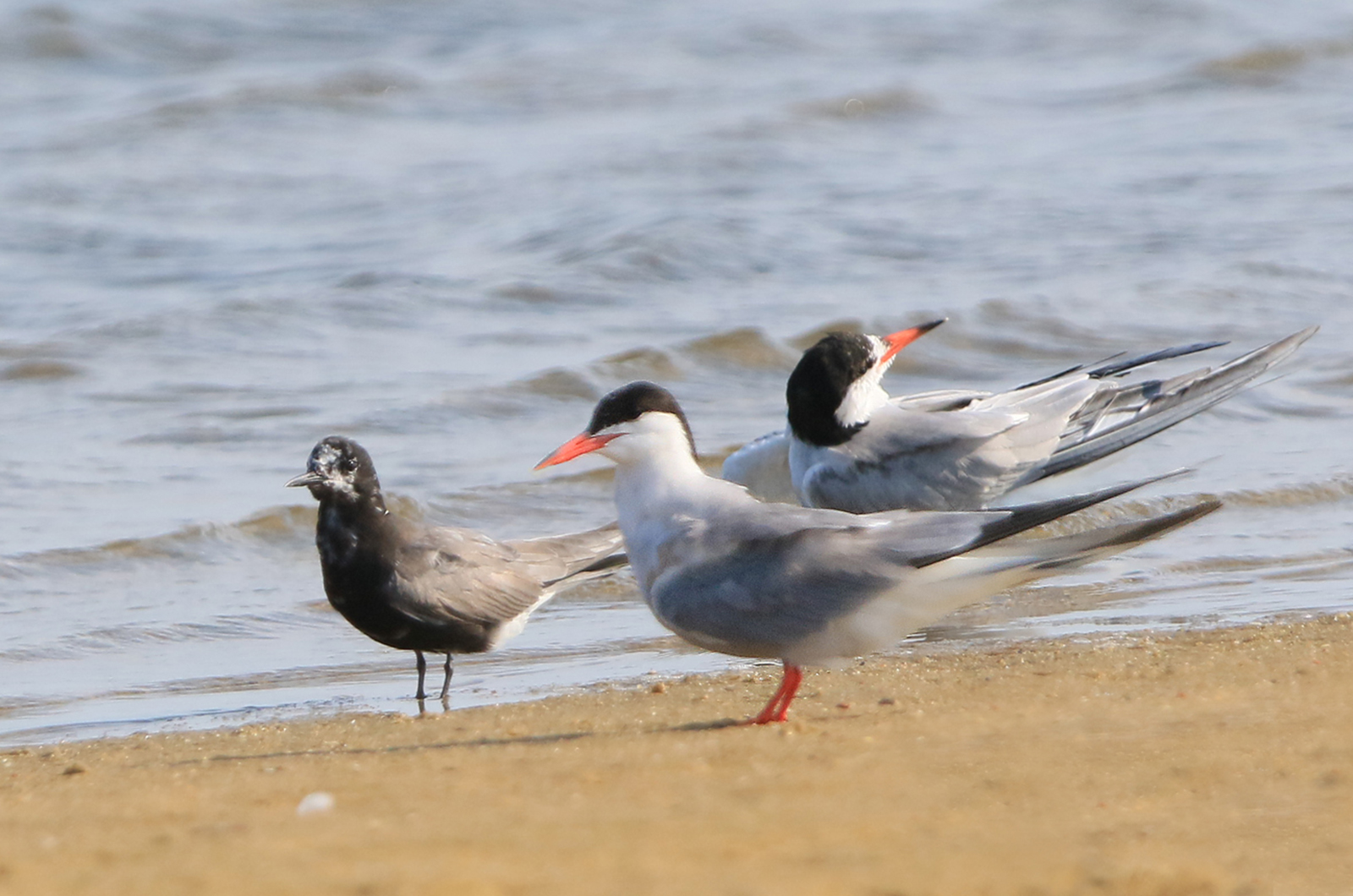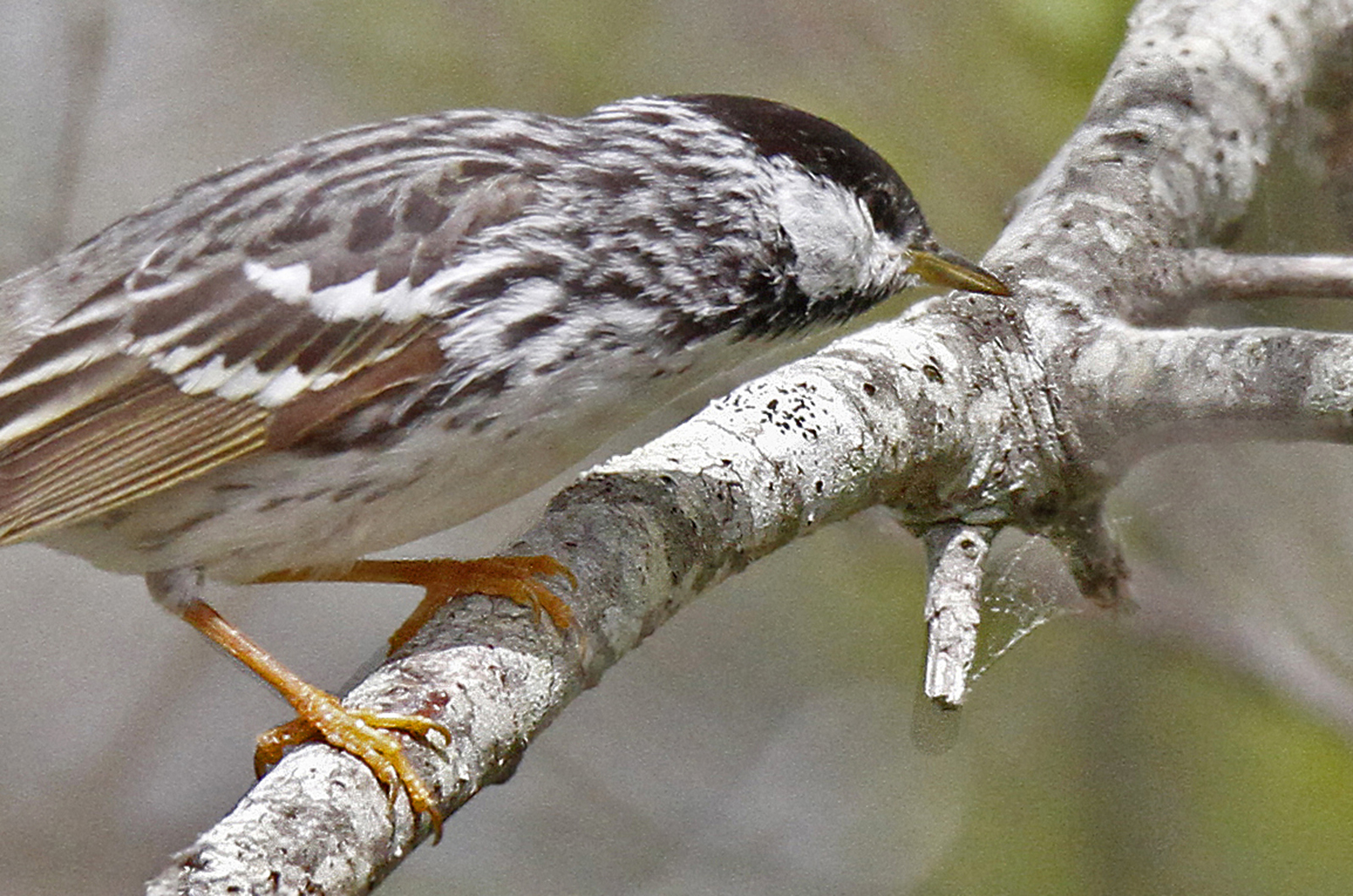It’s about time. I got an email from Wayne Smith with an attached photograph of a hawk at the nest containing three chicks. Finally, with that photo, the red-shouldered hawk becomes the newest species known to nest on the Island. They are widespread across all of Massachusetts except Martha’s Vineyard and Nantucket. By my records, it is the seventh time the species has been recorded on the Island, with the most recent being Ken Magnuson’s Feb. 27, 2016 sighting at the head of Slough Cove. Both the great horned owl and the tufted titmouse were abundant on the Cape before they made their way across the Sound in the 1990s.
Bird Sightings
Migration is now winding down. I visited the Oak Bluffs pumping station on May 25 and observed 34 species, which are fairly common breeding species: 15 red-winged blackbirds, 13 yellow warblers, seven American goldfinches, three Baltimore orioles, 11 gray catbirds, seven Carolina wrens, five great-crested flycatchers, three osprey, eight Canada geese — you get the picture.
Wendy and I visited Army Road through the Phillip’s Preserve on May 26 and they were all breeding species. The highlight was a great horned owl trying to escape six American crows in hot pursuit. This owl has not nested there for quite a few years. the last record of their presence there is when Amy and Olsen Houghton heard one calling in October 2022.
Similar reports arrived from Chris Scott at Long Point on May 24, Rich Couse at the Hoft Farm on May 25, Margaret Curtin at the Dr. Fisher Road in West Tisbury and Shea Fee at Fulling Mill Brook on May 26, and David Padulo at Great Rock Bight on May 27. The breeding season is now the focus of most birds.
Migrants are less abundant than they have been in the past month even though the weather — mild with southerly winds — has been favorable for migrating birds.
Flycatchers are interesting birds with a variety of migration times: phoebes are among our earliest migrants, showing up in the last half of March, the great-crested flycatcher first appeared in Late April, and now come the Empidonax flycatchers, which are practically impossible to identify by sight alone. If you think sparrows and sandpipers are tough to identify, try these flycatchers.
Sky Kardell heard and then saw the first-of-the-year willow flycatcher near the eastern end of Lucy Vincent Beach on May 26. And Matt Pelikan recorded what could be the song of a distant least flycatcher at the Biodiversity Works headquarters on May 23, but that identification could not be confirmed even after many of us listened to the recording.
The eastern wood-pewee is a flycatcher that nests here and is easier to identify by sight and sound. It has been spotted by Chris Scott at the Tuthill Preserve on May 20, Ruth Richards at Christiantown on May 22 and there were multiple sightings on May 24 by Bridget Dunnigan and Sea Williams at the State Forest, Susan Whiting at Black Point Pond, and Richard Goldenberg at Christiantown.
Sightings on May 25 included ones by Rich Couse at the Hoft Farm and Chris Scott at Cedar Tree Neck, and Wendy Picardo on Brushroom Lane in West Tisbury and by both Luanne Johnson and Nancy Weaver at Great Rock Bight. The May 26 sightings were by Ruth Richards at Blackwater Pond and Shea Fee at Fulling Mill Brook.
On May 27 it was Luanne Johnson at 12 Aspen Lane West Tisbury, David Padulo at Great Rock Bight, and Bob Shriber in Aquinnah.
Sky Kardell found a yellow-billed cuckoo at Caleb’s Pond on May 25 and two purple martins at the Hoft Farm on May 27. The worm-eating warbler lingering at the Phillips Preserve has apparently moved on, as Penny Uhlendorf reports that it was last seen on May 22. Lanny McDowell found the horned larks that are nesting on State Beach on May 22. And Nick Bologna watched and photographed a mother American woodcock with four chicks crossing State Road in Aquinnah recently.
This column has given less attention to the waterbird migration this month. Nancy Nordin observed a black tern, a species more commonly seen in the summer and fall, at Katama Bay. On May 25. Laughing gulls are seen through the summer in small numbers. Recent sightings with larger numbers including Correne George found eight at Felix Neck on May 17, Nancy Weaver saw 20 at Caleb’s Pond May 18, the next day Sky Kardell seeing 20 at Cape Pogue, Rand Burnett located five at Wasque on May 22, and I found two at Sarson’s Island on May 27.
Sandpipers and plovers have been present across the Island throughout the month of May in small numbers, but now their numbers are peaking with large numbers on Norton Point.
Sanderlings were seen on Norton Point. Samuel Scarfone reports 110 on May 20, Chris Scott found 45 on May 24, and Nancy Nordin saw 140 on May 26, while Sky Kardell spotted 50 on Cape Pogue on May 25.
Samuel Scarfone saw 36 slack-bellied plover on May 20, Chris Scott found 35 on May 24 and Bob Shriber counted 21 on May 26. These plovers also spend time foraging on sparsely vegetated areas of Katama Farm, where Sky Kardell and Nancy Nordin counted 200 on May 18.
Rudy turnstones sightings have been limited to Edgartown, with fewer than 10 at Eel Pond and Sarson’s Island. At Katama Farm Nancy Nordin counted 24 on May 18 and on Norton Point she saw 120 on May 25, while the next day Bob Shriber counted 65.
Dunlin have been around all winter and this week they were only found in Edgartown, mostly on Norton Point where Samual Scarfone observed 53 on May 20 and Nancy Nordin spotted 80 on May 26.
We also have the species that are nesting on many beaches across the Island: least tern, common tern, piping plover, American oystercatcher and willet.
This pattern contrasts to that of greater yellowlegs, which were mostly gone by mid-May. Rand Burnett located one near Wasque on May 19, Nancy Nordin spotted two on Norton Point and Sky Kardell had one on Cape Pogue, both on May 25. The last sighting of purple sandpipers was Bob Shriber seeing the flock of 20 lingering on the offshore rocks at Moshup Beach on May 18.
Please email your sightings to birds@vineyardgazette.com
Robert Culbert is an ecological consultant with Nature Watch living in Vineyard Haven.







Comments
Comment policy »